SEO, or Search Engine Optimisation, is the powerhouse behind getting noticed in the vast landscape of the internet. And it’s the strategic playbook that savvy businesses use to make sure their online presence doesn’t just exist but thrives. Want to uncover the secret sauce that big brands use to rock the search game? Let’s dive into the nitty-gritty of SEO, demystifying the strategies that make the big players stand out.
But why does it matter to you? Well, imagine this: you have a fantastic website, an online gem waiting to be discovered. SEO is the tool that puts a spotlight on it when someone is looking for what you offer. Whether you’re a blogger, a business owner, or just someone passionate about making their mark online, understanding search engine optimisation is key – so, let’s equip you with the knowledge to boost your online visibility and make your digital footprint one that can’t be ignored.
Table of contents
The foundation of SEO
Keyword research
Technical SEO optimisation
Backlink strategy
User experience (UX)
Social media presence
Local SEO
Mobile optimisation
Site security (HTTPS)
Schema markup
The Foundation of SEO
Ready to turn your website into a magnet for clicks? SEO is not just a buzzword; it’s the essential toolkit for making your online presence shine. Search engine optimisation is like the GPS for your website in an online maze. It’s all about tweaking your site so that when someone hits up Google with a question, your site is the top pick.
Why does it matter? Well, think about your last Google search. How often did you click on the fifth page of results? Exactly. SEO is your golden ticket to not being buried in the digital graveyard of search results. Now, let’s talk tactics. It’s not rocket science, but it’s a bit of a science and a dash of art. From the words on your page to the backend technical stuff, every little detail counts.
Keywords rule the roost
Imagine you’re the person searching. What would you type in Google? Those are your keywords. Sprinkle them naturally in your content, titles, and behind-the-scenes stuff (metadata).
Content is king
Quality matters. A lot. Google loves fresh, relevant content. It’s like the fuel for your SEO engine. Create stuff people want to read, and Google will take notice.
Tech talk – keep it snappy
Slow websites are like a snooze button for users. Google knows that. So, make sure your site is zippy – optimise images, clean up the code, do what it takes.
That’s the foundation. Search engine optimisation is your online real estate agent, making sure your website is prime location in the digital world.
Keyword research
Let’s talk about how people find your shop online. That’s where keyword research struts into the spotlight. First things first, what are keywords? They’re the words or phrases folks type into search engines when they’re on the hunt for something. Think of them as the keys to unlocking your online presence.
Why does it matter? Well, it’s the difference between being the answer to someone’s query or getting lost in the digital shuffle. Strategic keyword research matters because it’s like having a map to understand what words or phrases your target audience is using. It’s about speaking their language so that when they search, your site raises its hand and says, “Hey, I’ve got what you need!”
Incorporating keywords into content, metadata, and on-page elements
Now that we’ve got our list of keywords, what do we do with them? We strategically weave them into the fabric of our digital space. When creating content, naturally include your chosen keywords. It’s not about stuffing them in like a Christmas turkey; it’s about making sure your content genuinely aligns with what your audience is searching for.
Behind the scenes, in the metadata (titles, descriptions, tags), sprinkle those keywords. It’s the information that search engines read before presenting your site in search results. Make it count. From headers to image alt texts, every on-page element is an opportunity to let those keywords shine.
Keyword research is like putting on the detective hat for your website. It’s about understanding what people are looking for and ensuring your site is ready to provide the answers.
Technical SEO optimisation
It might sound like computer wizardry, but it’s actually all about making sure your website is the shining star in the eyes of search engines. You’ve got to prioritise the technical aspects of SEO for website optimisation because it’s not just about the content you see; it’s about how your website operates behind the scenes. Google and its pals want to recommend sites that not only have great content but also deliver a smooth user experience.
Speed is key [H4]
Slow websites are like a frustrating buffering screen. Ain’t nobody got time for that! Optimising your site speed is crucial. Compress images, clean up unnecessary code – do whatever it takes to make your site load faster than microwave popcorn.
Mobile responsiveness matters
We live in a mobile world. If your website looks like a mess on a phone, Google takes note. Make sure your site is as beautiful and functional on a mobile device as it is on a desktop.
Fix those crawl errors
Ever had a broken link ruin your internet experience? Search engines hate that too. Regularly check and fix crawl errors on your site. It ensures that when Google sends its digital spiders crawling, they have a smooth ride.
Technical optimisation is like the engine under the hood – not flashy, but without it, your online vehicle won’t go far.
Backlink strategy
This is like having your buddies vouch for you at a party, but in the digital realm. You’ve got to build a strong backlink profile through outreach, partnerships, and content marketing. So, what’s a backlink? It’s when another website links to yours. It’s like a vote of confidence. Google sees it as a sign that your site is worth checking out.
But not all backlinks are created equal – quality over quantity is the game here. For outreach campaigns, you need to act like a digital socialite. Reach out to websites in your niche. Offer something valuable, be it content or collaboration. When they link to you, it’s a win-win.
Then, forge partnerships with other businesses or influencers. When they mention you and link to your site, it’s a testament to your credibility. Finally, create shareable content. When others find your content valuable, they naturally link back to it. It’s the snowball effect of great content leading to more visibility.
Remember, not all backlinks are your friend. Avoid shady practices, like buying links; Google’s algorithm is pretty good at sniffing those out. Authenticity is the key here.
User experience (UX)
User Experience (UX) is the not-so-secret sauce for keeping your digital visitors happy. It’s not just about making your website pretty; it’s about making it user-friendly. UX is important as a ranking factor because it’s Google’s mission to direct people to websites that provide a seamless, enjoyable experience.
Easy navigation is key. Imagine walking into a store where you can’t find anything. Frustrating, right? Same goes for websites. Make sure your visitors can easily navigate through your digital space.
Clear calls-to-action (CTAs). What do you want your visitors to do? Buy something? Sign up? Make it crystal clear with compelling CTAs. Don’t make them hunt for the action; guide them.
Overall positive experience. Your website is like a virtual handshake. Make it pleasant. Optimise for fast loading times, ensure compatibility with various devices, and eliminate annoying pop-ups that make users want to throw their devices out the window.
Intuitive design. Arrange things logically. If a visitor can’t find what they need within a few clicks, they might bounce. Keep it intuitive.
Mobile-friendliness is a must. More people browse on their phones than ever. If your site isn’t mobile-friendly, you’re missing out. Ensure your website looks and functions beautifully on all devices.
Feedback is gold. Listen to what your users say. Analyse bounce rates, gather feedback, and adapt. UX is a continuous refinement process.
Social media presence
Social media is not just about sharing memes or food pics; it’s a powerful tool for boosting your online visibility. Why bother with social media? Well, it might not directly impact your search engine rankings, but it plays a more subtle role. A strong social media presence indirectly contributes to your brand’s visibility and authority.
The connection between social signals and search rankings refers to the influence that social media activity can have on a website’s visibility in search engine results. Social signals, such as likes, shares, and comments on social media platforms, are seen as indications of user engagement and content relevance. Engaging and shareable content may attract more attention and traffic, which can indirectly contribute to an improved website ranking.
Enhanced brand visibility
Social media platforms are bustling digital marketplaces. The more active you are, the more eyeballs you attract. It’s simple maths. A strong social media presence can lead to increased brand visibility, making it more likely for users to recognise and trust the brand when they encounter it in search results.
Brand authority and trust
Regular, quality content establishes you as an authority in your field. When people see you know your stuff, they’re more likely to trust and recommend you. Search engines aim to provide users with trustworthy and authoritative content. A brand with a robust social media presence, positive engagement, and a growing community is likely to be perceived as more authoritative, influencing search engines to view its content more favourably.
Potential for backlinks
Social media provides a platform for sharing content, and if your content gains traction, it may attract attention from other websites. This can lead to natural backlinks, which are an essential factor in search engine algorithms for determining a site’s authority.
Indexation of social media profiles
Search engines often index social media profiles, and these profiles can appear in search results. If a brand’s social media profiles are well-optimized with relevant keywords and information, they can contribute to a more comprehensive and positive online presence.
Leveraging social media
It’s important to note that while social signals are considered by search engines, they are just one piece of the larger SEO puzzle. Content quality, relevance, website structure, backlinks, and technical SEO aspects also play crucial roles in determining search rankings. Therefore, a holistic approach that integrates social media strategies with other SEO best practices is key to maximising online visibility and search engine performance. Our advice:
- Share your blog posts, products, or announcements across different platforms. Each platform has its unique audience, so you’re tapping into diverse user bases.
- Make your content shareable. When people find value, they’re likely to share it with their network, extending your reach.
- Respond to comments, messages, and participate in discussions. It’s not just about broadcasting; it’s about building a community.
Remember, it’s not about being on every platform; it’s about being where your audience is. Choose wisely, be consistent, and let your social media presence be an extension of your brand’s personality.
Local SEO
This isn’t just about being global; it’s about owning your turf in the digital world – optimising for local search is crucial to ensuring you pop up when locals are on the lookout. It’s about making sure your brick-and-mortar or local business stands out in the digital crowd. When someone nearby is searching for what you offer, you want to be the business that they find.
- Claim and optimise your Google My Business listing. It’s like your digital storefront – provide accurate information and opening hours, add photos, and keep it updated.
- Manage your online reputation through online reviews. Positive reviews build trust, but even negative ones can be turned into opportunities by responding and resolving issues. It shows you care about your customers’ experiences.
- Name, Address, Phone number – keep these consistent across all online platforms (your website, directories, and social media). It might sound basic, but it’s a big deal for local SEO.
- People on the go use their phones to search. If your site isn’t mobile-friendly, you might miss out on a lot of local love and potential customers.
- Include local keywords naturally in your content. If you’re a pizzeria in Brooklyn, make sure your website says so.
- Ensure your website adjusts seamlessly to different screen sizes. You want potential customers to have a smooth experience, whether they’re on a laptop or a smartphone.
- Help search engines understand your location better by implementing local schema markup. It’s like a digital address that search engines can read.
Mobile optimisation
In a world where smartphones are an extension of our hands, making sure your website plays nice on those small screens is non-negotiable. Why bother? Because your audience is on the move, and you want them to have a seamless experience, whether they’re on a bus, in a cafe, or just chilling on the couch.
Responsive design. Your website should be like a chameleon, adapting to different screen sizes effortlessly. Responsive design ensures your content looks good and functions well on any device.
Fast loading times. Mobile users are impatient. If your site takes forever to load, they’re out of there. Optimise images, streamline code – do what it takes to keep things snappy.
Thumb-friendly navigation. Ever tried clicking a tiny link on your phone and ended up frustrated? Ensure your site’s navigation is thumb-friendly – buttons and links should be easy to tap.
Google gives preference to mobile-friendly websites in its search rankings. If your site isn’t mobile-friendly, you might be missing out on a significant chunk of potential visitors. To get started, include mobile-friendly elements in your SEO strategy. This includes optimising your mobile content and ensuring that mobile and desktop versions of your site provide a consistent experience. Then, regularly test your website on various devices. What looks good on your laptop might be a mess on a phone. Catch those issues before your users do.
Site security (HTTPS)
Let’s dive into the topic of digital fortification, i.e. safeguarding your digital home from unwanted intruders. It’s not just for the big players. It’s about instilling trust in your visitors – when visitors see that padlock icon in the address bar, it signals a secure connection. It’s like the digital version of a trustworthy handshake. Users feel safer interacting with your site.
We should also mention that HTTPS is a factor in how search engines rank your website. Google prefers secure websites. Having HTTPS is a positive signal for search engines, potentially giving your site a little boost in the rankings.
So what is it? HTTPS encrypts the data exchanged between a user’s browser and your website. This means that even if someone tries to eavesdrop, all they get is a bunch of unreadable characters. HTTPS also verifies that your website is indeed what it claims to be. It ensures that users are connecting to the legitimate version of your site and not a fraudulent one.
In an era where data privacy is paramount, having HTTPS aligns with contemporary standards. It shows that you take user security seriously.
Making the shift to HTTPS
HTTPS is the digital lock on your website’s front door. To enable HTTPS, you need an SSL (Secure Sockets Layer) certificate. Many hosting providers offer these for free, and they’re relatively easy to install. Ensure that all internal links within your site use the HTTPS protocol. It’s about creating a seamless, secure experience for your users across all pages. Set up redirects to automatically send users from the unsecured HTTP version to the secure HTTPS version. This maintains a consistent and secure user experience.
Schema markup
It might sound complex, but it’s essentially your way of communicating with search engines in a language they understand. You see, it’s about giving search engines more context about your content, which can result in richer and more informative search results. Schema Markup is like providing a guidebook for search engines to navigate your content more effectively.
Enhanced search results. Schema Markup provides additional details about your content. This could include ratings, reviews, publication dates, or even specific product information. It makes your search result stand out.
Structured data. Think of Schema Markup as a way to structure your data in a way that search engines grasp easily. It’s like telling them, “Here’s what this content is about, and here are the key details.”
Rich snippets. When search engines understand your content better, they might reward you with rich snippets. These are the extra pieces of information (like star ratings or cooking times) that you sometimes see in search results.
Improved click-through rates. Rich snippets make your result more appealing. Users get a glimpse of what your page offers right there in the search results, potentially increasing the likelihood of them clicking through.
Implementing schema markup
- Depending on your content, there are various schema types to choose from – articles, reviews, events, and more. Identify the ones most relevant to your pages.
- You can manually add Schema Markup using HTML tags, or if you’re not a coding enthusiast, various tools and plugins are available to make the process easier.
- After implementing Schema Markup, use Google’s Structured Data Testing Tool to ensure it’s error-free. This tool helps you see how search engines interpret your markup.
The power of organic search traffic
Organic search traffic is the heartbeat of online visibility, and big brands have mastered the art of harnessing its power to dominate search results. Why do they excel? It’s not just about financial muscle; it’s about strategic prowess. Big brands recognise that organic search traffic is the lifeline connecting them to their audience. They invest time and resources in building authority and trust.
Beyond individual tactics, big brands adopt holistic SEO strategies. They don’t just focus on one aspect; they optimise every facet, creating a well-rounded digital presence. As you navigate the complexities of SEO, remember that domination in search results is not reserved for the giants alone. With a strategic mindset, a commitment to quality, and an ongoing optimisation approach, you too can carve out your space in the vast landscape of organic search.
Success comes with a combination of diligence, adaptability, and a commitment to providing value to your audience. Keep exploring and keep optimising!







